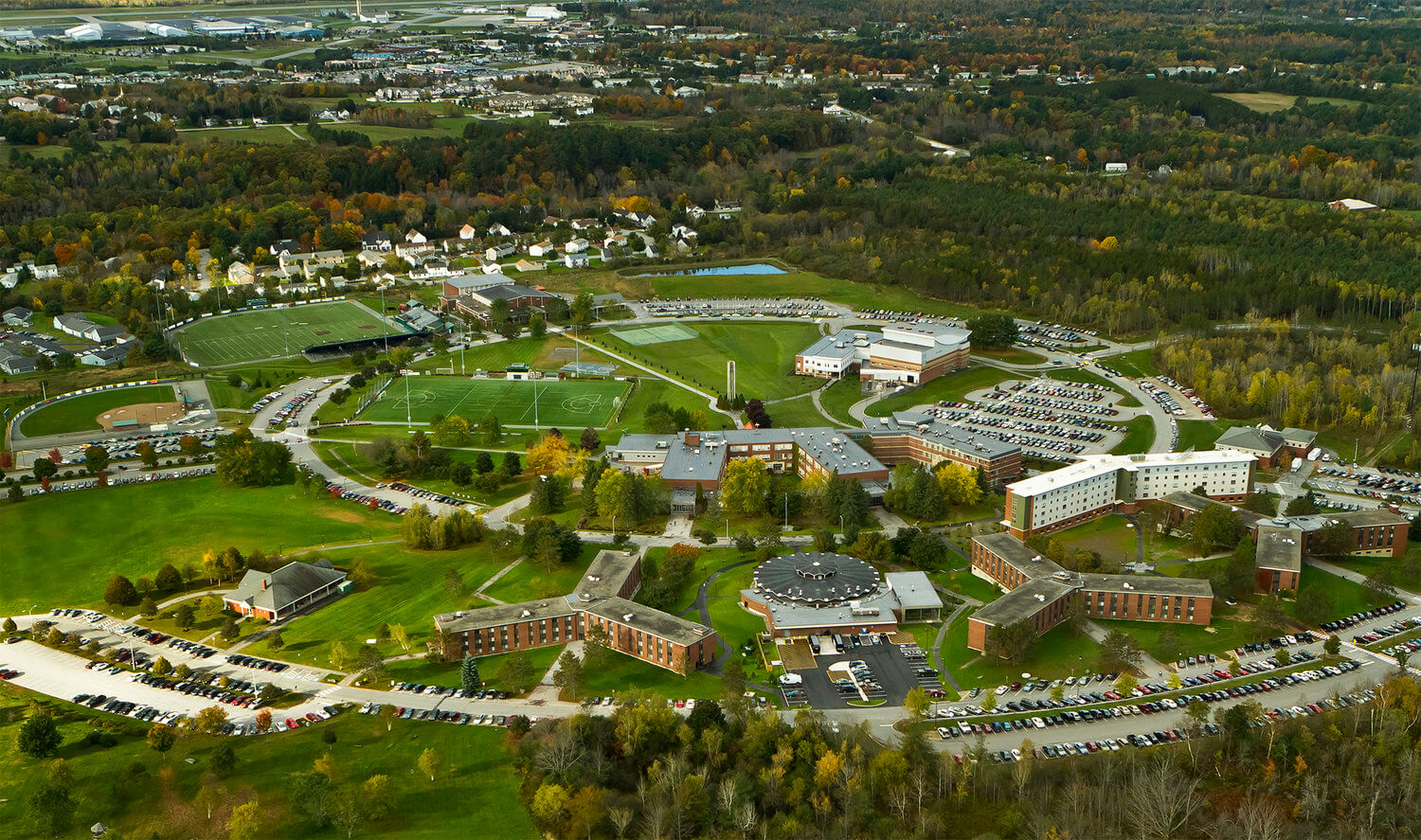This is the second post in a series. Here’s Part 1, where we talked to our partners at Hawai’i Pacific University and Gannon University. Here’s Part 3, where we talked to our partners at Warren Wilson College and Newman University.
Husson University has been a Waybetter client for about two years, and the truth is, they’re crushing it. We’re very proud of the role we play in their efforts, but they’re also really good at a lot of things that have nothing to do with us—they’re priced well, they grow the programs that students want, they hire the right people, and, most importantly, they work really, really hard.
Here’s a longish interview with the folks in charge there. It’s wide ranging, and it’s a pretty rare, up-close look at how a school that’s in a tough demographic region has been able to thrive. We conducted the interview on May 22nd.
Husson University (Bangor, ME)
JOHN CHAMPOLI, VP of Enrollment Management
ADAM SMITH, Director of Undergraduate

WB: Where was Husson on May 1?
Adam: We were up 72 deposits on May 1 compared to last year, a 12.9 percent increase, so certainly a good spot to be in. But while May 1 is big—it’s a good indicator—we’re going to be grinding all summer.
John: We’re looking pretty good for budget and growth. We’ve done some extra things this year. For example, Adam has worked with the health programs to get them to up their capacity for first-year student intake.
WB: How does that work? Do you just go to the academic side of the house and say, “Look, we can bring in more health students if you can make the program bigger?” Is that just how you have the conversation? How did you approach that?
Adam: One of the things that we tried to do is work with the health programs more closely in terms of having a weekly meeting and just bringing, literally, files up to their office and working with each department one on one, a little bit more than we have in years past.
WB: Can you elaborate on that?
Adam: One of the things that really helped our cause was data. So, for example, sometimes when you look at an attrition rate of a health program, like a physical therapy, and an occupational therapy, or even a nursing program, and you say, well “How many of these students are making it to the professional phase? How many of them are actually graduating within six years?”
We showed the faculty the data we had to help them see that admitting more first-years will help the program stay full all the way through—even into the professional phase.
That was really a big movement for us, and it allowed us to bring in additional students that we haven’t been able to do in years past.
And the faculty and program directors were willing to work with us, so kudos to them as well, because they see the data, and they realize, “Hey, there is an opportunity here.”
Because what it’s going to do for those health programs, like PT, and OT, it’s going to really make their professional phase more competitive and get them some really good students.
John: And then they don’t have to depend on the grad side at all. Ideally, they’ll be internally fed from our programs rather than always having to look outside for grad students from other schools.
WB: Are there other programs or areas where you’ve seen growth?
John: Definitely in the College of Business, which also encompasses the College of Legal studies, along with Criminal Justice. We’ve seen a lot of growth there.
WB: What efforts/strategies/adjustments were most important to Husson’s enrollment success this year?
Adam: I wanted to take a look at the application process, specifically to see what the turnaround time was. So one of the biggest changes we made was giving students a decision as quickly as possible. We decided we wouldn’t let the applications sit around. As soon as they’re complete, we’re getting the decisions out the door. We’re almost trying to race against other schools.
I think that really helped us because that was something that we were not doing previously, so getting those decisions out sooner, that certainly helped.
Adam: We also put a lot of responsibility on our admissions counselors, to really take ownership of their territories. So what we would do is say, “Okay, you’re covering Massachusetts, take ownership of that, you’re going to be covering as many fairs as possible.” We would give them a set goal. They would go out, they would cover those particular fairs, they would also do outreach to students, prospective students in those territories. So, I think that was another big change and certainly had a good impact on us.
Adam: And we also revamped our events a little bit. We revamped the open house, made a couple of tweaks to that. And we also tweaked the accepted student days as well. And we had more faculty engagement, which I think really highlights our programs. And some of the feedback that we heard directly from families that visited was that they got a much more personal touch when they came here to Husson compared to other schools they had visited. And so that was really great to hear.
John: There were a couple other things we did. One was Adam bringing in a consultant who worked on a yield bootcamp with our counselors. And they got into texting, they got into calling and what that entails in building relationships with students.
I think that was big plus for us, that was sort of new. Our approach in the past had been more of a general communication pipeline, and we would respond to incoming calls and inquiries. But this year we were more outgoing, more aggressive in that sense—in a good way.
That and also we had a little fun with our search responders and applicants. We sent out more swag this year—things like sending out Husson branded socks.
And this is where the work Waybetter does for us is huge, because you guys have helped us grow our search responders by, five, six times over what it used to be. And that leads to increased applications and obviously increased deposits.
And I don’t want to give specifics away, but the microsites we do with you guys are huge.
WB: Thanks, we’re blushing! What else has been working?
John: The other big thing for us, honestly versus last year, was getting the financial aid packages right, and on time. We got our best packages out on our first shot this year. So we really redirected the funds to where they needed to be and that was a big deal in terms of helping students make the right decision based on affordability.
WB: Does it ever happen that a student will come to you and say,“Well you know, down the road at X University, they’re giving me a $15,000 scholarship and you guys are only giving me $7,000” or whatever the case may be?
John: All the time. All the time. The interesting thing with us is we’re so competitive on price point, we compete with the state system in Maine. So a lot of questions are, “Hey, U Maine gave me this, what do you got?” But then we found this year our packages were actually beating some of the U Maine system schools.
Especially for in state, so some of the flagships, they must have cut back aid to in state Maine students and we had students coming to us saying, “Wow, you guys beat them by five grand. How is that possible?” And we said, “Well, it’s just that’s our aid package this year.” We actually stabilized our discount rate, too. So it wasn’t anything crazy. Maine state schools just cut back.
WB: What advice would you give to your counterparts at other schools who are struggling? Who are saying, “Oh man, once again, May 1 was not what we were hoping for?”
John: For Adam and me, honestly, it’s about grinding it out every day. And then just trying to improve the little things each and every day. That’s all it is. And then that adds up to something bigger. But then you have to keep looking at things, taking a step back, and ask how could it be even better.
We brought in record classes the last two years, but how we beat it is, Adam will say things like, “You know what, I think our events are good, we get good feedback—but I still think they could be better.”
WB: What else?
Adam: I think success also starts in the hiring process and getting the right people on the bus. Making sure everyone’s moving in the right direction and exhibiting a high degree of emotional intelligence. We want the people in place that are not sweating the small stuff, we want them focused on the big picture every day. I think that’s why having counselors take ownership of their territory and take ownership of upcoming admissions events—maybe that’s not going to help the enrollment numbers right away, but I can tell you, it’s going to make it a lot more… it’s going to make it easier when you have people in place that you enjoy working with every day, that you know are going to bat with you, instead of pulling in the opposite direction.
John: And that can be tough. We replaced 14 out of 27 positions this past year. So there was lot of you’re either getting on the bus, or you’re getting off the bus. And we’re going the right direction.
So, it was creating a culture. I think looking at each department that maybe, reports to the VP and saying hey, what can we do to fix here? Is this person on board? If they’re on board, what can I do to support them and move it forward? And if not, they’re not on board, it’s getting the right player on the bus. And that’s a tough call.
WB: It sure is.
John: Because people’s jobs and lives are involved, and sometimes it’s a matter of maybe encouraging them that another place is probably a little bit better fit for them. And it’s the willingness to have the hard conversation, to say: this isn’t working.
WB: I know that’s hard.
John: But that’s the VP’s job, and that’s why you’re called a VP—you’re supposed to make those tough calls and do what you have to do. Your motivation can’t just be that you want to be liked. If you want to be respected and you want to move things forward and have the people on your team winning, and have them have confidence in you, that’s what you gotta do.
WB: Any other advice?
John: A a big thing that does help in some of our programs was, as Adam said before, getting the faculty involved. Their willingness to be involved is huge, and you can see that in which programs grew. For example, Our Criminal Justice program has grown the most over the past five years. And the director of our CJ program will have lunch with, or set aside time for, every single prospective student that walks on campus who is even remotely interested in Criminal Justice.
So those are some of the things where you see that partnership, partnering with the faculty, getting them to realize, listen this is all about all of us. This is about our collective survival and well-being.
